How to Use Gamsol With Oil Paint
Are you looking for a way to thin your oil paint without making it watery? Gamsol is a great option! Oil paint is a versatile medium that can create a variety of textures and effects. When mixed with the proper substances, it can create beautiful works of art.
This blog post will discuss how to use Gamsol with oil paint and the benefits of using Gamsol. We will also provide tips for getting the most out of your painting experience. Keep reading to learn more!
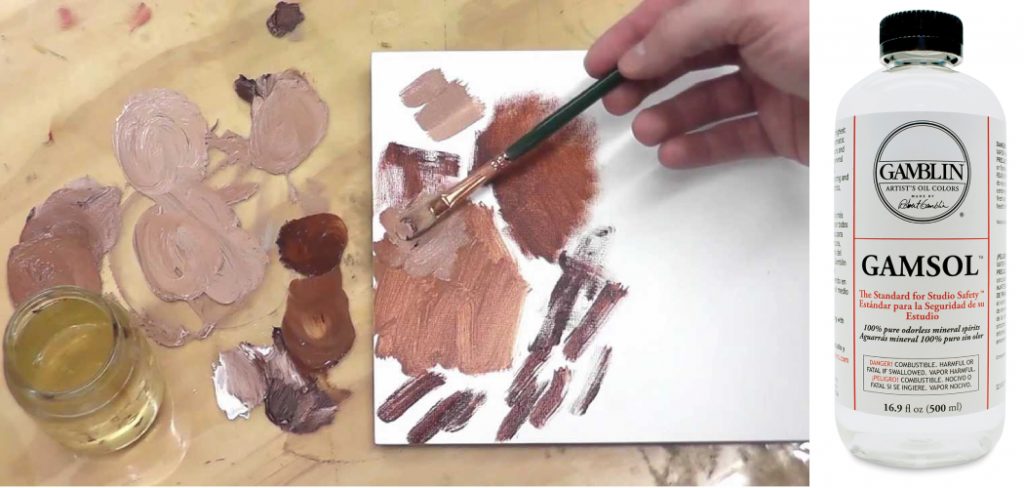
What Is Gamsol for Oil Painting?
Gamsol is a petroleum-based solvent used for thinning oil paints and cleaning paintbrushes. It’s often called odorless mineral spirits, which sounds semi-scary but isn’t quite as hazardous as full-strength paint thinner or turpentine. Because of its lack of harsh chemicals like benzene and hexane, Gamsol is supposed to be much safer for your health.
That said, it’s still a strong solvent, so you should always use Gamsol in a well-ventilated room. It’s also recommended to use natural oils like poppy oil or walnut oil because they are very thick compared to linseed oil. Since Gamsol is very thin, it helps even out the oil mixture.
What Is Gamsol Used For?
Gamsol is mainly used during the clean-up process, which means you should have a separate jar of paint thinner to use during your primary painting session. Rinse your brush under water first for about ten seconds, then swish it around in Gamsol until there’s nothing but clear liquid dripping off the bristles.
You can even lay your brush across the top of the jar and let it sit for a minute to help loosen up any remaining paint. After cleaning up, you may notice an oily residue on your work surface. This is simple enough to remove with a little bit of clean water and paper towels. Just be sure to dry the surface off entirely before using it again.
8 Benefits of Using Gamsol With Oil Paint
1. Gamsol has lower specific gravity than mineral spirits.
2. Gamsol is considered less hazardous than mineral spirits and odorless when mixed with oil paint.
3. While still thinning the oil paint, Gamsol does not cause the color to become transparent in one area and opaque in another, like mineral spirits.
4. Gamsol does not cause the paint film to become uneven like mineral spirits.
5. Gamsol is less likely to dissolve the binding materials in oil paint than mineral spirits which means that your brush strokes are more consistent, and an even sheen will be achieved when you are finished painting.
6. The odor associated with oil paints and solvents is reduced or eliminated using Gamsol.
7. When mixed with oil paint, the drying time of Gamsol is similar to that of mineral spirits.
8. Gamsol can be used for other oil-painting-related activities like softening mediums and cleaning brushes without leaving an oily residue.
10 Ways on How to Use Gamsol With Oil Paint
1. Thin an Oil Paint Mixture:
Gamsol can thin oil paint and clean it up after finishing the work. It’s wonderful for moving thick oil paint around, whether just moving it within a painting or applying thick paint thinly over an underpainting. Gamsol does not have petroleum solvents, so there are no health hazards. You can work with the thinner in the open air.
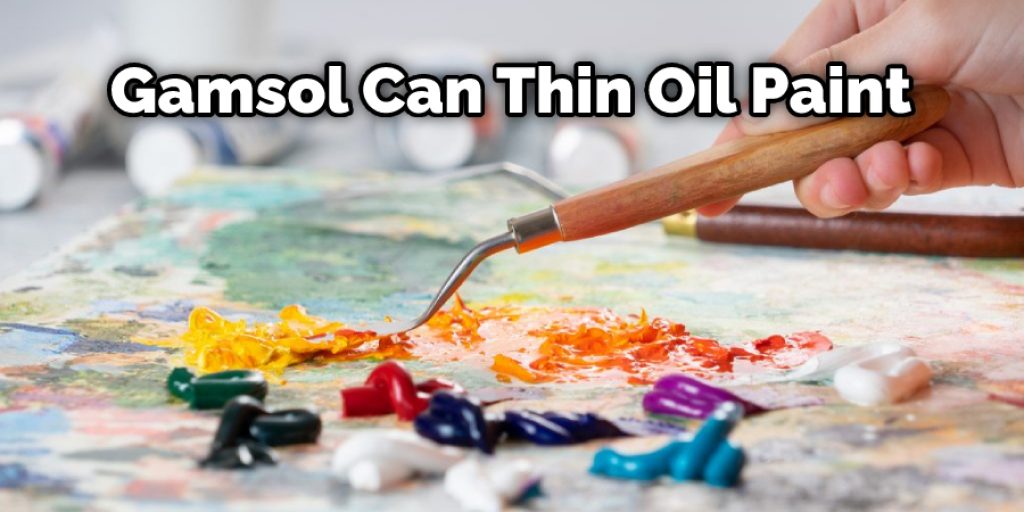
2. Clean Up Oil Paint:
Gamsol is a great way to clean up oil paint brushes when you are finished painting for the day (or when they get very stiff). Gamsol will emulsify and break down thick oil paint quickly, leaving your brush clean and ready to use the next day.
3. Clean Brushes Between Colors:
Gamsol is especially helpful for cleaning stiff bristle brushes during painting. Brush only one color over another with Gamsol, then rinse out the brush in water to get rid of that color before moving on to paint another layer or using another pigment (this goes for acrylic paint as well).
For brushes made from natural hair, it’s a good idea to wash them with soap and water as soon as possible after using oil paint so that the brush will last as long as possible.
4. Wash Up Brushes:
Use Gamsol as a final wash to clean up your brushes before putting them away. It’s easier and safer than turpentine or mineral spirits (which are flammable), and it won’t damage the brush at all.
5. Clean Up Palette Knives:
Gamsol can also clean palette knives and other tools (spatulas, etc.). After using the Gamsol and water method to clean your brushes, use Gamsol to clean up everything else on your palette. Just pour some liquid over the surface and use a rag or paper towel to wipe it clean.
6. Oil Painting Medium:
Gamsol can be added to liquid oil paint to create an oil painting medium, which will thicken the liquid for use in impasto techniques. Mix one part Gamsol with two parts oil paint (by volume), and you’ll have an excellent thickening agent for your oil paints.
7. Varnish Painting With Oil Paint:
You can also create an emulsion with Gamsol instead of traditional heavy-bodied varnish. Use the same ratio of one part Gamsol to two parts paint, and thin it out with water until you have a consistency that’s easy to work with. You’ll have what is called milk paint.
Artists have used this method for centuries, and it was one of the early techniques developed around oil paint. Milk paints are made by mixing Gamsol with liquid oil paints; you can also purchase milk-paint emulsions premixed with Gamsol and water.
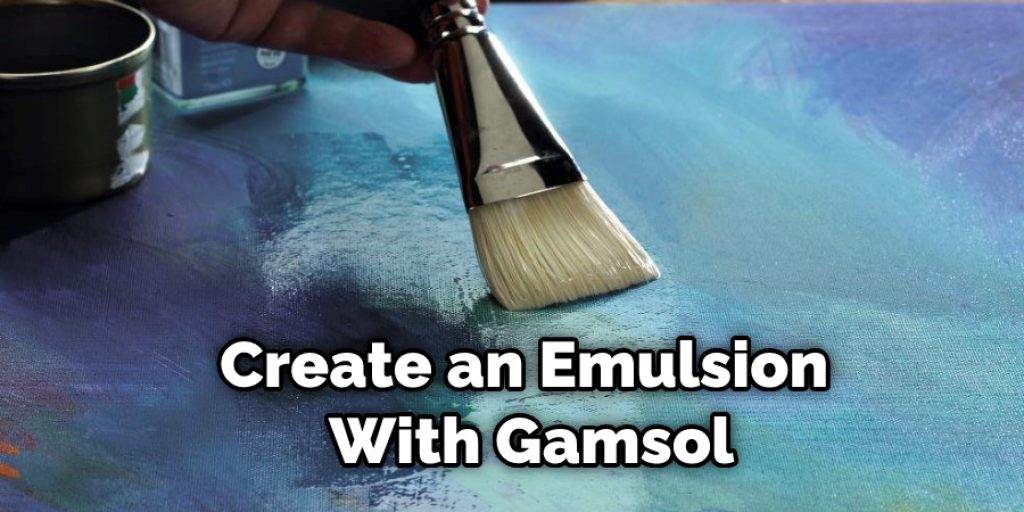
8. Milk Paint for Glazing:
Milk paint is an excellent glaze mixture; it’s transparent and will soak into the surface of your painting. It’s perfect for thin layers of color painted over another layer to blend two colors or unite several under-layers together. Milk paint is very similar in its capabilities to traditional glazing medium, and only it’s easier to clean up and doesn’t have any petroleum solvents.
9. Add Gamsol to Oil Paint Instead of Thickener:
If you want to add body to your paint without using traditional oil thickening agents, mix in a small amount of Gamsol with the paint. It will give it more flexibility and firmness than mixing in oil mediums like glazing medium or linseed oil. In addition, this method will allow you to mix the paint directly with the Gamsol, and it will be easy to clean up.
10. Oil Painting Over Acrylic Paint:
Using Gamsol instead of linseed oil medium will prevent the drying time of acrylic paint layers underneath it from slowing down. Plus, the water in Gamsol will allow you to easily clean up brushes and tools with soapy water, rather than having to use turpentine or mineral spirits.
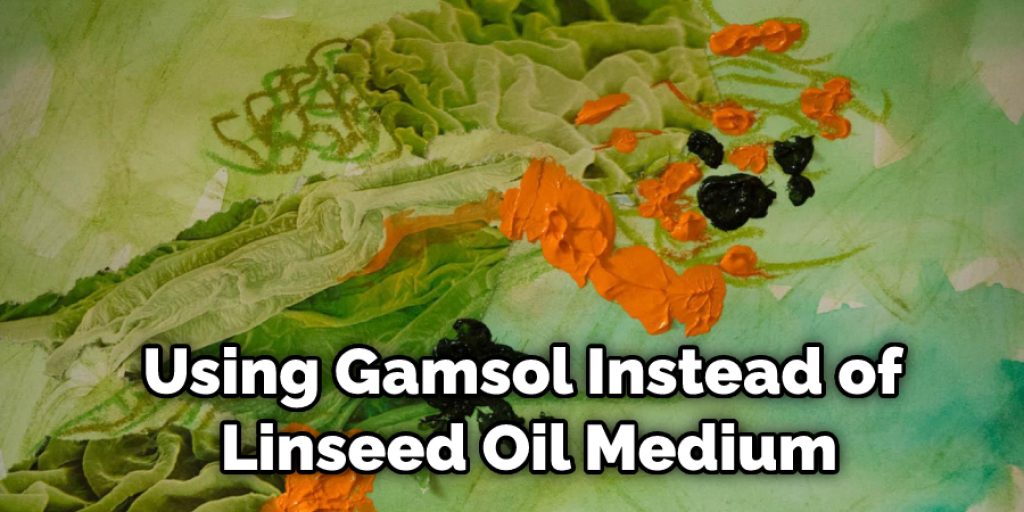
Some Tips and Suggestions
Here we have given some tips and suggestions on how to use gamsol with oil paint.
1. You can use it in the open, but Gamsol seems to dry up a bit if exposed to air for a couple of days. So keeping a wide-mouthed storage jar with a tight-fitting lid in the studio will help keep the unused portion from drying out.
2. For the same reason, it’s better to return unused portions into the container rather than pouring them back into the can.
3. Gamsol is made of petroleum distillates. If you are allergic, avoid contact with the liquid or vapors.
4. Gamsol should not be allowed to contaminate water supplies because it could create a fire hazard.
5. Keep containers closed when not used and protect from moisture sources such as humidifiers, open windows, water baths, etc.
6. If Gamsol is spilled on clothing, it can be washed out more quickly than most oil paint thinners. Keep this in mind the next time your model spills their glass of wine!
7. Although oil paint will not dissolve in Gamsol, some pigments might slowly dissolve in it. So don’t leave your paintbrushes standing in Gamsol for too long lest the bristles get splayed.
Do You Need Gamsol for Oil Painting?
Gamsol is a petroleum distillate. It’s sometimes used to replace the dangerous solvents that are often used with oil painting. However, most experienced oil painters still use solvents because they are the only way to dissolve all oil paint. In addition, Gamsol is more expensive than mineral spirits, so you need to decide if it’s worth using.
Gamsol is a very gentle cleaner that won’t harm your brushes or hands. It’s a good choice for sensitive skin, but you need to use a chemical hand soap before starting a painting session because oil paint can give off fumes that may irritate some people.
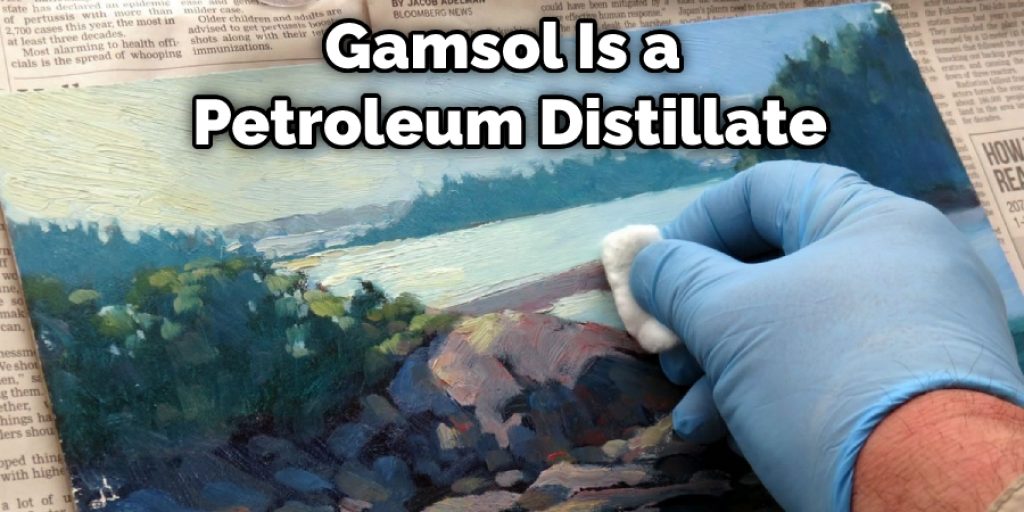
Conclusion
Painting with oil paint can be a complicated process. Artists use many different methods to accomplish the desired result, and it takes time for an artist to develop their techniques. One popular way is using Gamblin Gamsol as a medium in conjunction with traditional oils or acrylics. This post has explained how to use gamsol with oil paint so you can get unique effects without switching media types entirely.
Gamsol is a great way to thin oil paint and increase the transparency of your color. If you’re looking for an alternative to turpentine, this might be it! Give it a try by using the same ratio as other oils in your palette. Have you ever used gamsol? Let us know what you think about it in the comments below; we’d love to hear from our readers!




